In addition to producing a variety of egg colours through our show breeds, we also engage in various crossbreeding projects to achieve an assortment of egg colours.
Easter Eggers
Easter Eggers are known for laying, typically but not exclusively, pastel blue or green eggs. They are hybrids rather than a distinct breed. Read here for further details about Easter Eggers.
Olive Eggers
Olive Eggers are generally expected to produce olive-coloured eggs, though this outcome is not guaranteed. It is essential to understand that Olive Eggers are hybrids and not recognised breeds according to any specific standard. We are currently preparing an article to clarify this point and will share a link to it in due course.
Classification by Egg Colour
The inconsistency in egg colour production across different generations of Olive Eggers and Easter Eggers can lead to some confusion. This variability sometimes adds to their charm; however, it may not always align with expectations. Consequently, we have opted to classify our birds based on the egg colour they produce rather than simply as Olive Eggers or Easter Eggers. This classification encompasses crosses, projects (the progeny of our breeding efforts, as discussed in our articles, which are aimed at testing for specific genetic traits in project outcomes). As a result, we offer a broad spectrum of egg colours.
Blue-Green Layers
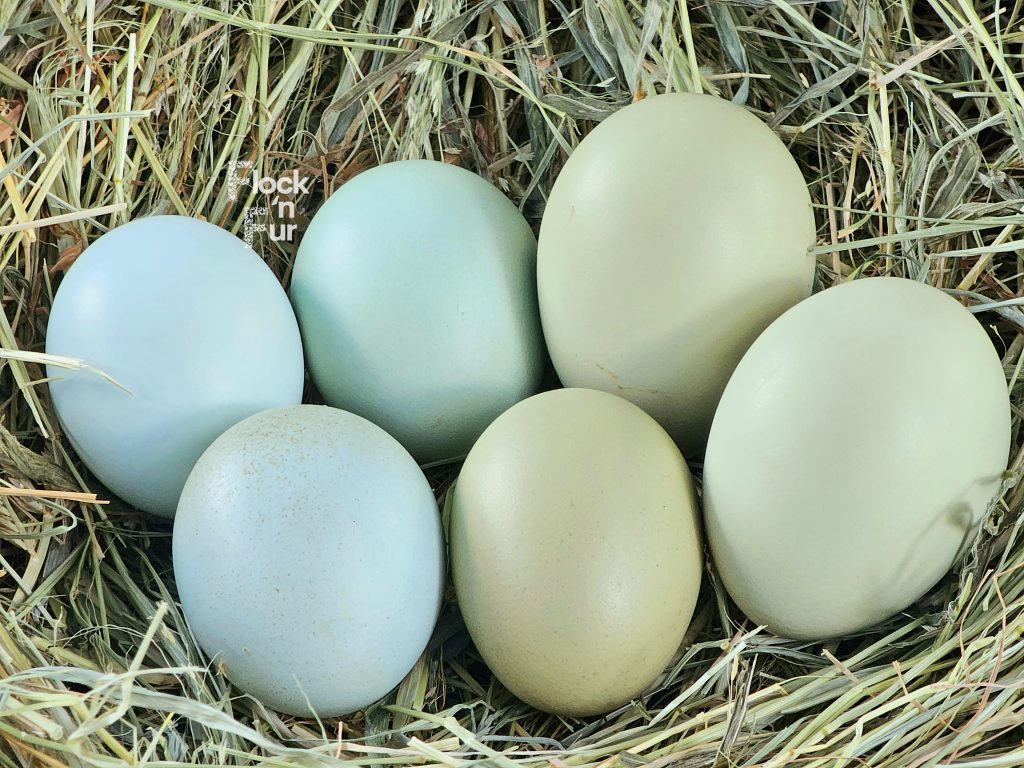
Blue layers, or sometimes blue-green layers, include Easter Eggers and Ameraucanas that do not conform to the breed standards. However, a significant portion, possibly the majority, exhibit variations in egg colour, fluctuating from green to blue over time. This variability is influenced by factors such as the bloom and other deposits causing a tint on the eggshell and is considered a genetic characteristic of our flock. It is noteworthy that these can possess either one or two copies of the blue egg gene.
Green Layers
Green layers in our flock lay eggs that are consistently light green in colour. Unlike eggs from Olive Eggers, these green eggs do not tend towards the darker olive spectrum and remain distinctly light green.
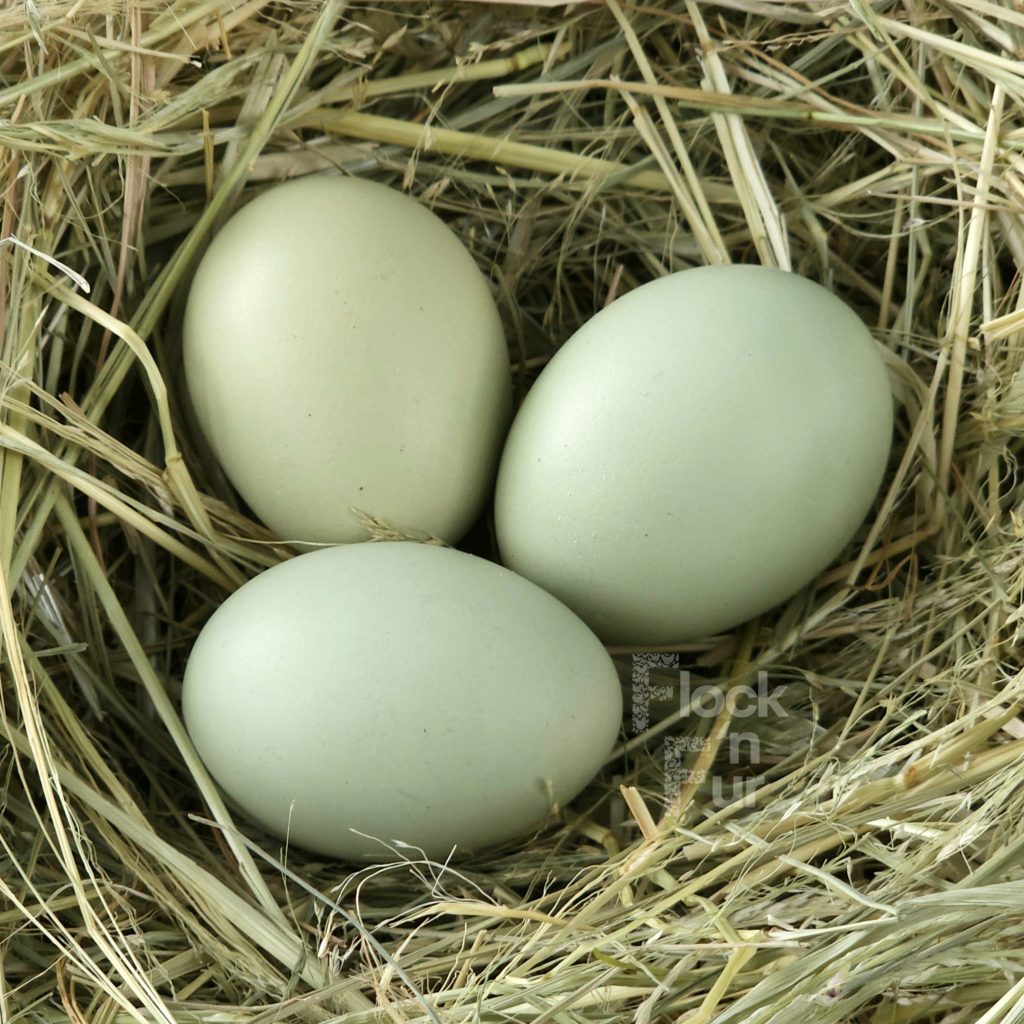
Olive Layers

Our Olive Layers, essentially Olive Eggers, are designated for their specific output of olive-coloured eggs. These chickens have been selected for their ability to produce this unique egg colour consistently.
Dark Brown Layers
The dark brown layers in our flock are typically Marans that do not meet the strict breed standard or are crosses of Marans with other breeds. These crosses result in chickens that lay dark brown eggs but no longer carry the gene for laying blue eggs.
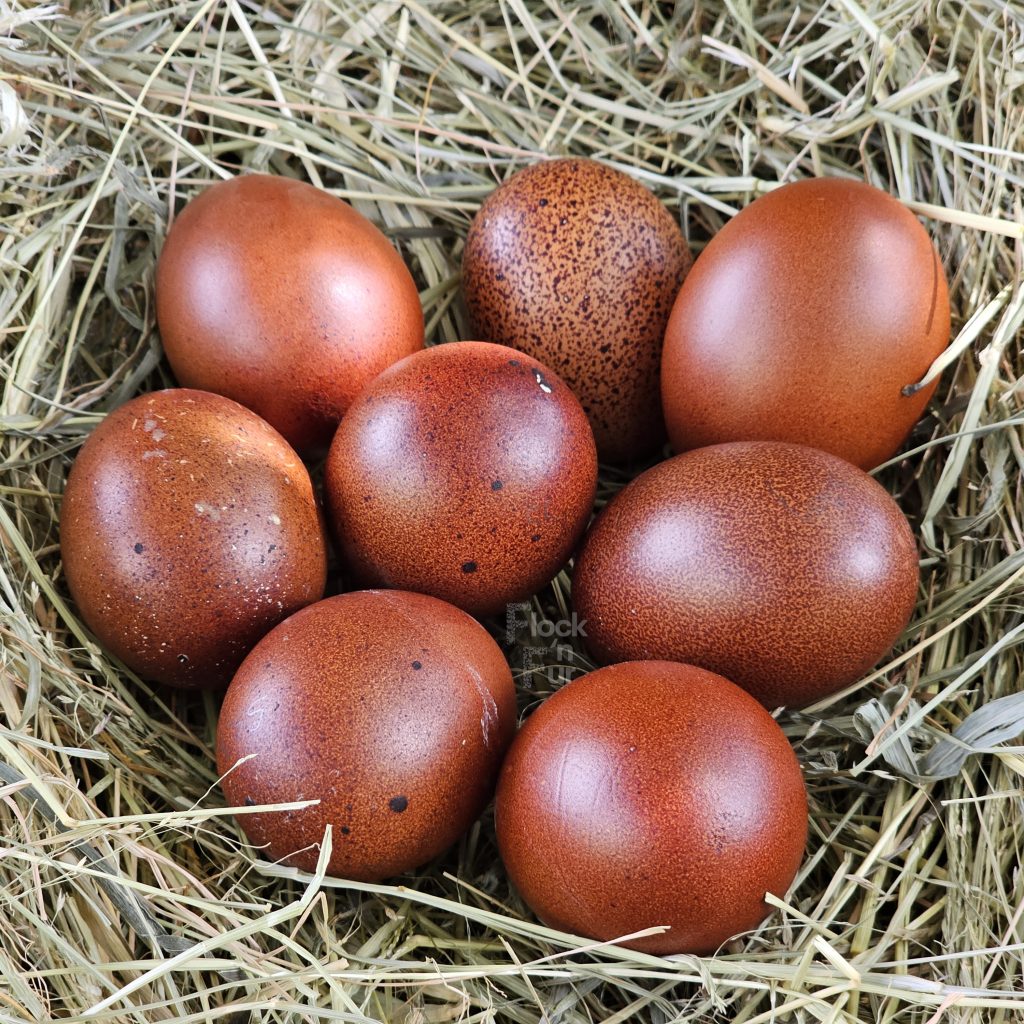
Medium to Light Brown Layers
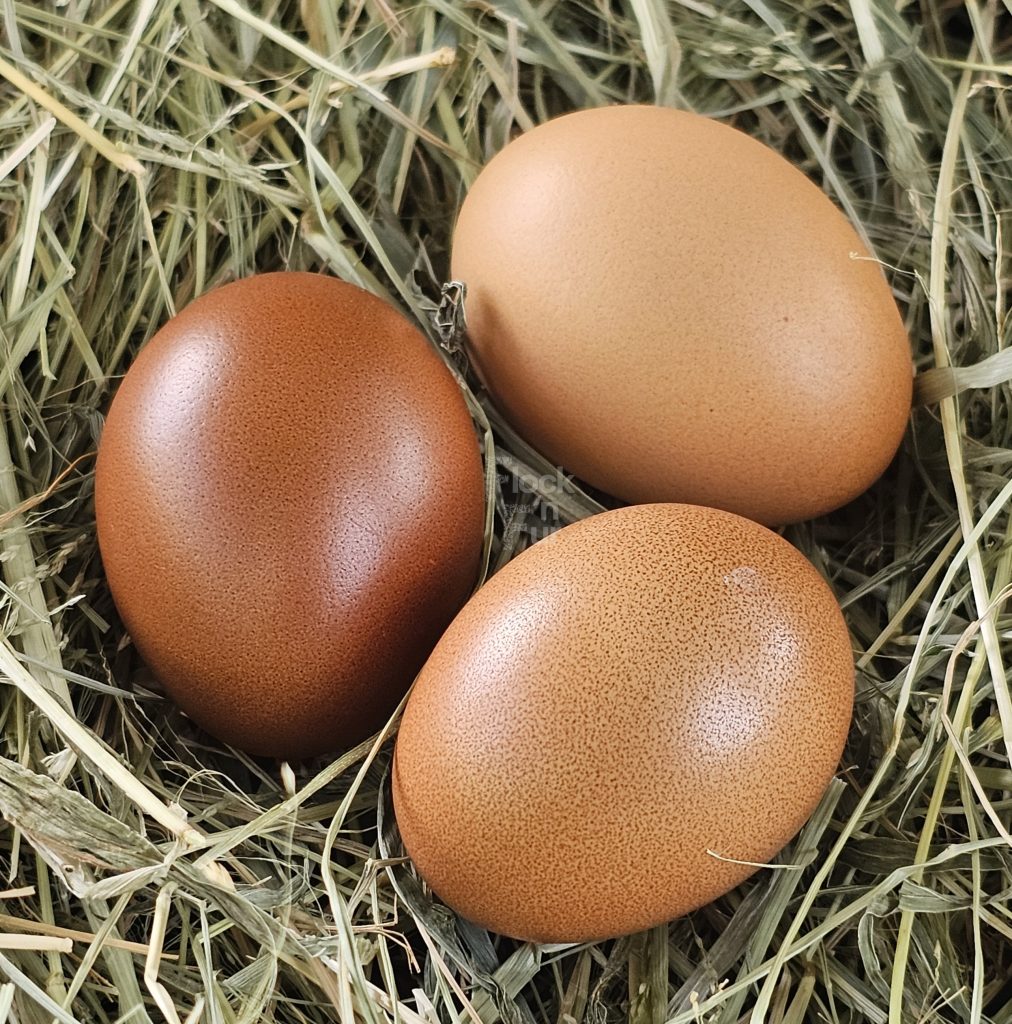
Medium to light brown layers usually consist of Maran crosses or are part of various projects including Olive Eggers. These chickens produce eggs that are a medium shade of brown, a result of their mixed heritage.
Tan and Cream Layers
Tan and Cream Eggs are produced by many breeds; we keep Wyandottes (or crosses thereof) for this purpose. We might even on the odd occasion have an Olive Egger with a lighter eggshell colour, which has also lost the blue egg gene.

Pink Layers

The notion of pink eggs arises from an optical illusion, where a tan or cream egg with a heavy bloom appears pink. Such eggs are occasionally produced by our Wyandottes or their crosses.
White Layers
White layers include breeds like Leghorns. In our flock, we also have Easter Eggers that, due to an extremely heavy bloom, lay eggs which often look white but are mint green under the bloom.
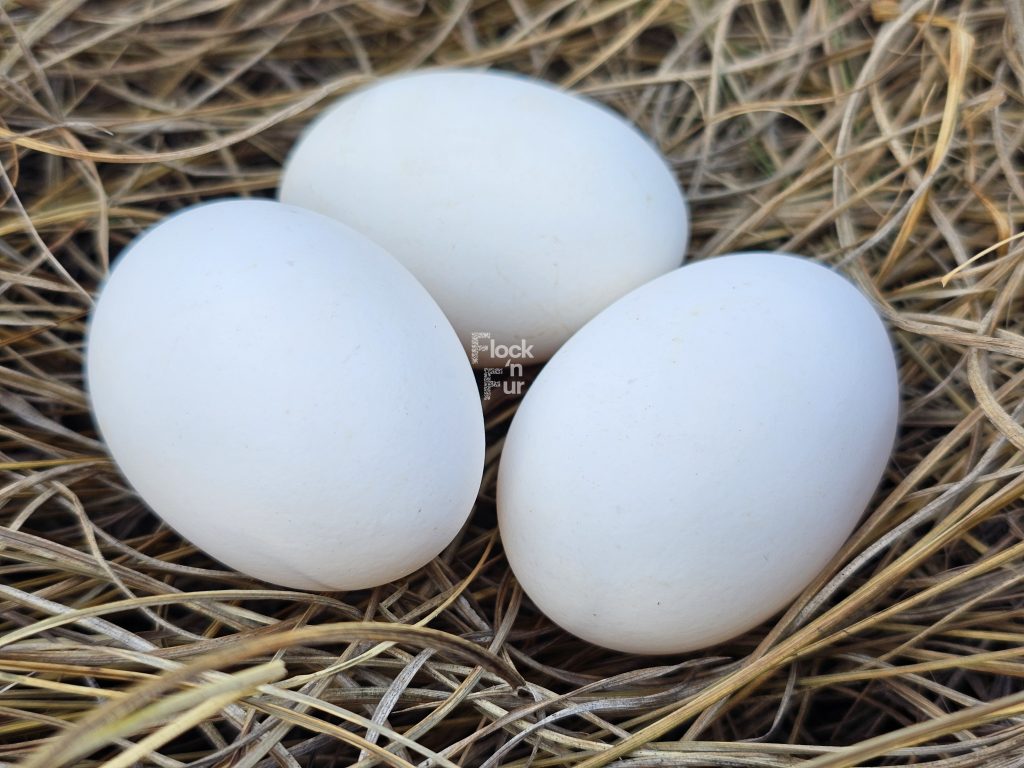
Grey Layers

Grey eggs typically come from chickens that lay a greenish egg, such as Olive Eggers or Easter Eggers with a light green egg. An extremely heavy bloom on these eggs can give them a grey appearance.
Spotted or Speckled Eggs
Eggs with spots add an element of surprise to egg collection. Breeds like the Silverudd’s Blue and some Marans can produce spotted eggs, depending on various factors including the distribution of Protoporphyrin IX pigments. As our Olive Eggers are Marans crosses, they also often have spots or markings on their eggs. Wyandottes, known for laying tan or pink eggs, can also produce spotted eggs, adding to the diversity of egg appearances in our collection.
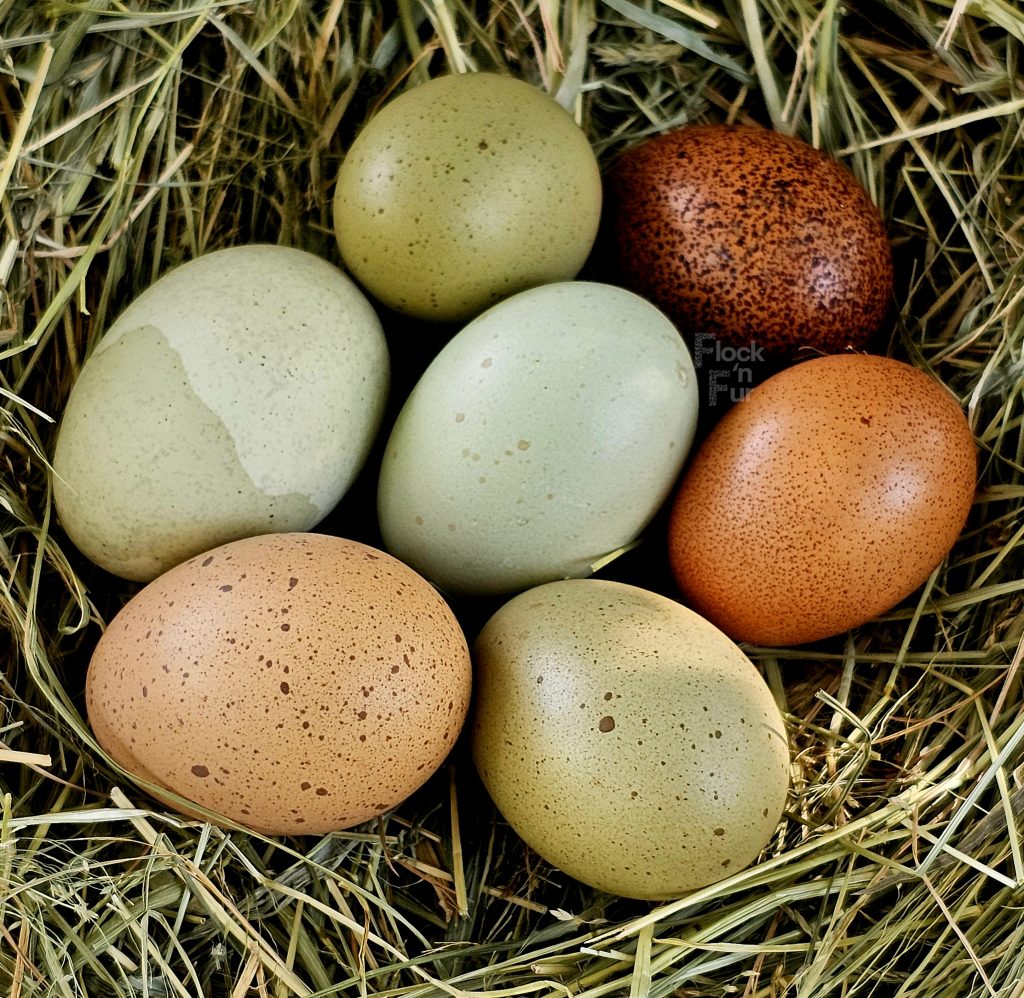
Pursuing the Purple Egg
Although we do not currently have purple eggs, we are working on a project aimed at producing chickens that can lay purple eggs. By crossing Marans, Wyandottes, and incorporating heavy blooms, we hope to introduce purple eggs. The objective is to breed a line that reliably produces purple eggs. Given their nature, achieving 100% purple eggs is impossible, but we aspire to develop a line where all hens produce a purple egg at some point.
Point-of-lay Hens for your own Colourful Egg Basket
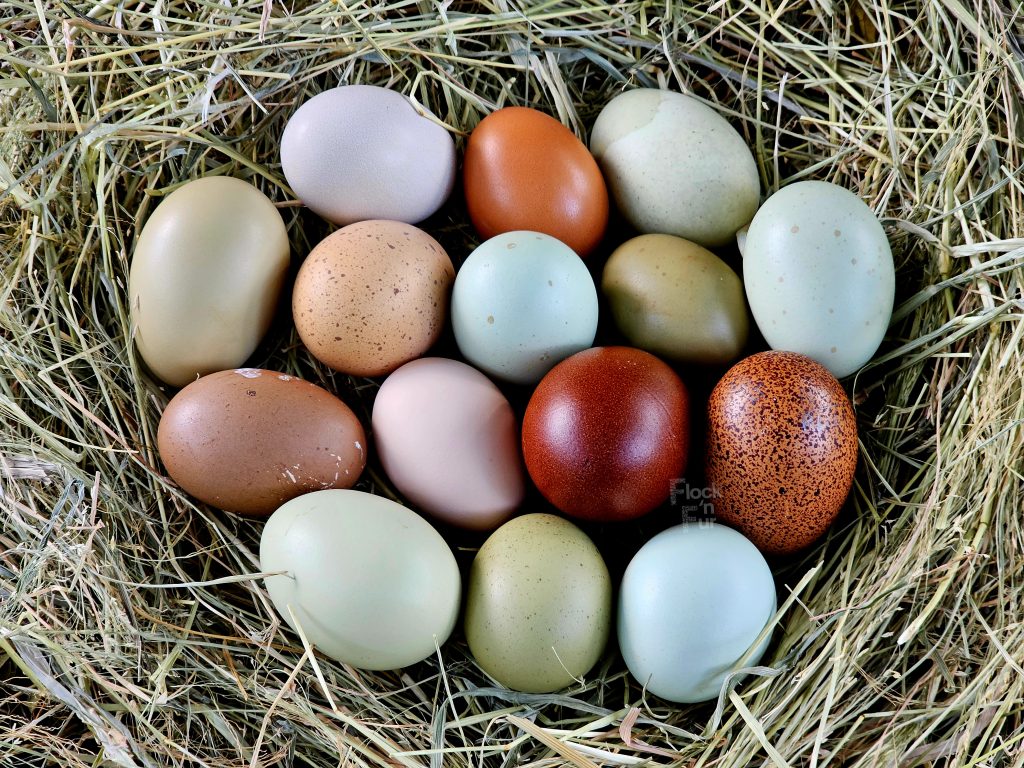
Learn about our offering of Point-of-lay Pullets to give you your own Colourful Egg Basket, consisting of collections from the egg layers listed above.
